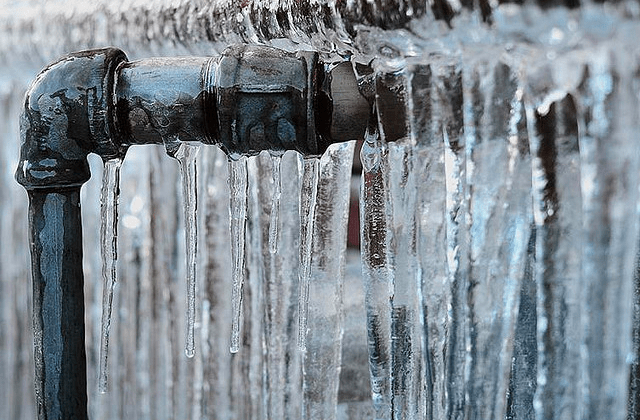Safeguarding Pipes from Cold Weather Issues: Essential Tips
Safeguarding Pipes from Cold Weather Issues: Essential Tips
Blog Article
Almost everyone is bound to have their own rationale on the subject of How To Avoid Freezing Pipes.
:strip_icc()/snow-outdoor-faucet-pipes-4af65d1e5e904fb1aa7bf74071fe5d89.jpg)
Winter can wreak havoc on your pipes, specifically by freezing pipes. Below's just how to prevent it from happening and what to do if it does.
Introduction
As temperatures decline, the danger of frozen pipes boosts, potentially causing expensive repair services and water damage. Comprehending exactly how to prevent frozen pipes is important for homeowners in cool climates.
Understanding Icy Pipes
What causes pipelines to ice up?
Pipes freeze when subjected to temperatures listed below 32 ° F (0 ° C) for extended periods. As water inside the pipelines ices up, it broadens, taxing the pipe wall surfaces and potentially causing them to break.
Dangers and problems
Icy pipes can lead to water system disruptions, building damages, and pricey fixings. Ruptured pipes can flood homes and trigger considerable architectural damages.
Indicators of Frozen Water Lines
Determining icy pipes early can prevent them from bursting.
How to identify icy pipelines
Seek lowered water flow from taps, uncommon smells or noises from pipes, and noticeable frost on exposed pipelines.
Prevention Tips
Protecting susceptible pipes
Cover pipes in insulation sleeves or make use of warm tape to shield them from freezing temperature levels. Concentrate on pipelines in unheated or outside locations of the home.
Home heating strategies
Keep indoor areas sufficiently heated, particularly locations with pipes. Open up cabinet doors to permit warm air to flow around pipes under sinks.
Protecting Outdoor Pipes
Garden hose pipes and outdoor taps
Disconnect and drain pipes garden pipes before winter months. Mount frost-proof faucets or cover outdoor faucets with shielded caps.
What to Do If Your Pipes Freeze
Immediate activities to take
If you suspect icy pipelines, maintain taps open up to soothe pressure as the ice thaws. Use a hairdryer or towels taken in hot water to thaw pipelines slowly.
Long-Term Solutions
Structural adjustments
Take into consideration rerouting pipes away from exterior walls or unheated areas. Include extra insulation to attic rooms, basements, and crawl spaces.
Upgrading insulation
Buy high-grade insulation for pipelines, attics, and walls. Appropriate insulation assists maintain consistent temperature levels and minimizes the danger of icy pipelines.
Conclusion
Avoiding icy pipes calls for proactive actions and fast actions. By understanding the reasons, indicators, and safety nets, home owners can shield their pipes throughout winter.
5 Ways to Prevent Frozen Pipes
Drain Outdoor Faucets and Disconnect Hoses
First, close the shut-off valve that controls the flow of water in the pipe to your outdoor faucet. Then, head outside to disconnect and drain your hose and open the outdoor faucet to allow the water to completely drain out of the line. Turn off the faucet when done. Finally, head back to the shut-off valve and drain the remaining water inside the pipe into a bucket or container. Additionally, if you have a home irrigation system, you should consider hiring an expert to clear the system of water each year.
Insulate Pipes
One of the best and most cost-effective methods for preventing frozen water pipes is to wrap your pipes with insulation. This is especially important for areas in your home that aren’t exposed to heat, such as an attic. We suggest using foam sleeves, which can typically be found at your local hardware store.
Keep Heat Running at 65
Your pipes are located inside your walls, and the temperature there is much colder than the rest of the house. To prevent your pipes from freezing, The Insurance Information Institute suggests that you keep your home heated to at least 65 degrees, even when traveling. You may want to invest in smart devices that can keep an eye on the temperature in your home while you’re away.
Leave Water Dripping
Moving water — even a small trickle — can prevent ice from forming inside your pipes. When freezing temps are imminent, start a drip of water from all faucets that serve exposed pipes. Leaving a few faucets running will also help relieve pressure inside the pipes and help prevent a rupture if the water inside freezes.
Open Cupboard Doors
Warm your kitchen and bathroom pipes by opening cupboards and vanities. You should also leave your interior doors ajar to help warm air circulate evenly throughout your home.

As an avid person who reads about Preventing and dealing with frozen pipes, I figured sharing that short article was appropriate. Are you aware of someone else who is fascinated by Winter Plumbing Precautions: Preventing Frozen Pipes? Do not hesitate to promote it. Kudos for being here. Return soon.
Schedule A Service Call Report this page